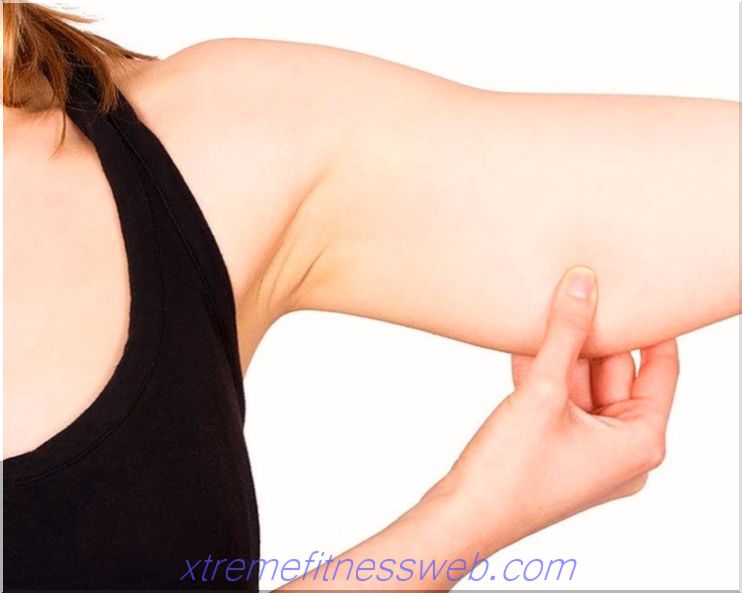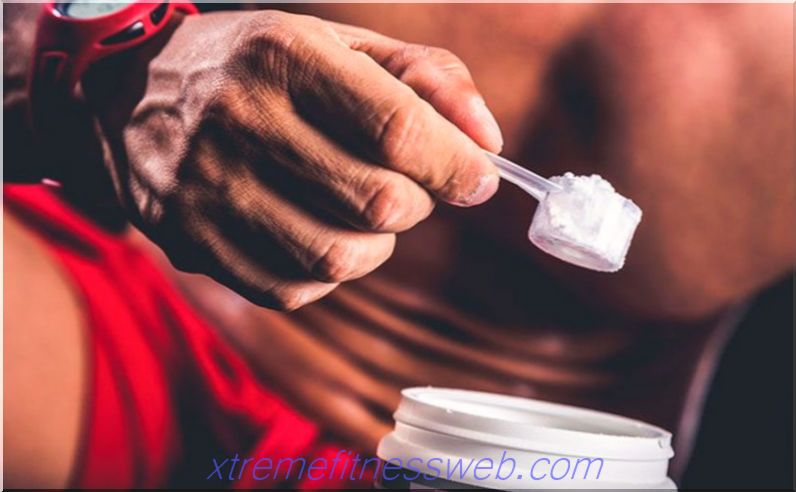
Kalistenika is an exercise with your own body weight. “Turnichki”, “workout”, “ghetto-training” and even “prison training” - these are other names of calisthenics. To build a powerful back, a horizontal bar is used here, legs are trained by jumping, squats on one leg, and lunges in different variations, arms and chest - push-ups on bars, and different tricks. Kalistenika began as a democratic street sport, an alternative available to everyone to the gym, and a way to be healthy and beautiful without coaches. Today there are whole workout centers where men and women learn to do tricks on the crossbar, perform various functional exercises with small equipment and are not afraid to get injured, as there is a special coating. In large cities built playgrounds with horizontal bars. In general, calisthenics are still waiting for those who want to practice without "iron" at any convenient time, and for free.
Content
- 1 What is Calisthenica "> 2 Basic Exercises
- 2.1 Pushups
- 2.2 Pullups
- 2.3 Press training
- 2.4 Leg training - squats and lunges
- 2.5 lower legs
- 2.6 Statics
- 3 Basic rules of training
- 4 Beginner Training Program
- 4.1 Day 1
- 4.2 Day 2
- 4.3 Day 3
What is calisthenics?

Kalistenika came to us from ancient Greece. It is not known for certain who first decided to pull themselves up on the horizontal bar for the sake of strength and beauty, but the frescoes retained the information. The Greeks loved to run, jump the stairs, perform several sets of push-ups, and work on the back muscles on the horizontal bar. And all this was called gymnastics, that is, work on your own body.
In the Middle Ages, training was the lot of the nobility, and those who decided to connect their lives with the army. Women did not engage in sports, perhaps, some of them. In modern times, gymnastics was revived, and two directions appeared - athletic, or strength, and calisthenics, or exercises with body weight.
Today, street workout championships are held at various levels, there are a lot of training materials on the network, and anyone can learn how to make basic calisthenic elements.
Advantages of Calisthenics:
- You can deal with curvature of the spine, impaired posture;
- Any person can achieve the result; it would be persistence;
- You can train at home or on the sports ground;
- Of the equipment required, perhaps, sportswear and a bar of magnesia;
- With calisthenics, good general physical fitness is built, strength and endurance for other sports;
- You can start training in childhood or adolescence;
- Classes will help strengthen immunity and fight stress;
- Competent workouts combined with proper nutrition will help you lose weight
Today, Kalistenika is experiencing a "rebirth." Workout became a trend after ordinary black ghetto guys began posting their workout videos on the crossbar. Aesthetics of the body, strength, dexterity, ability to perform tricks.
It is believed that there is no injury in the workout, and there is no burden on the central nervous system, but this is not so. In fact, there is an opportunity to get dislocations, shock injuries, and sprains, but workout has a serious advantage over amateur bodybuilding for a young man. In this system, there is no axial load on the spine, and a person manages to strengthen the muscles before the heavy weight of the barbell falls on his back. Strictly speaking, in the classical systems of training strength athletes (weightlifting and powerlifting), calisthenics is an OFP, that is, the first stage that a beginner goes through to strengthen his muscles.
Core exercises

In strength training, the technique of exercise is first mastered, and then the weight of the load increases. Workout also uses increased weight, for example, wearing backpacks or weighted vests.
But there is another type of progression - the complication of the technique of movement. A practitioner of calisthenics can begin to pull himself up with an elastic band that compensates for part of the body weight, or with the help of a friend, then - to perform the exercise without help. When he reaches a significant number of repetitions, he will either be pulled up even more times, or a backpack, or a vest, or an exercise with body weight, but on one arm.
There are three types of movement in a classic workout - pull-up or pull, push-up or bench press, and hold or static. In fitness variations, a jump or plyometrics and squats are also added.
Push ups

Push-ups are the simplest bench press movement. There are horizontal push-ups, that is, flexion-extension of the arms in focus, and vertical, the same flexion in the elbow and shoulder joint, but in emphasis on the parallel bars.
Horizontal push ups

Beginners begin to learn from the support - a bench, sofa, or something similar is suitable, preferably at the level of the belt or slightly lower. Accepted emphasis, palms under the shoulder joints, on inspiration, a tense body falls to the support, on exhalation - extension in the elbow joints and return to the starting position.
It is important to learn to do push-ups not from the knees, but from the support, because in this variation you can feel the correct functioning of the core muscles, that is, the press and back. In order to make it easier to squeeze out, in the initial position it is recommended to immediately remove the shoulders from the ears, reduce the shoulder blades, and as if to “inflate” the chest, pulling in the stomach. This will keep the back stable, and lowering easier.
Vertical push ups

They are of two types - reverse and from the bars. Everyone can do back push-ups. It is enough to sit on a bench or sofa, lower the pelvis down to the floor, and leave your palms in focus, and from this position, unbend your arms in the elbow joint completely. You do not need to “insert” your elbows until they click, the goal of the exercise is to raise your body to the level of support. You need to push off with your feet just enough to maintain a stable position of the body, and not so that the lift is carried out at the expense of the hands.
Push-ups from the bars - this is the second level of difficulty. It is necessary to take the emphasis in the rack on the bars, palms under the shoulders, the back is “assembled” as in horizontal push-ups. Further, the body gently lowers down along the natural trajectory, and smoothly squeezes up. Quick and sharp push-ups are the next level of difficulty. Beginners should learn to control lowering and lifting so as not to feel discomfort in the shoulder joint.
A good result in push-ups for a beginner is more than 20 repetitions. If this is in your asset, it is worth starting to push up with a pause at the bottom, or with a burden.
Pull-ups

You need to learn how to pull yourself up with strengthening the grip in the neck and back muscles. For this purpose, Australian or parallel pull-ups are used. You need to hang on a low bar, and place your legs on a bench or other support. The bar should be at mid-chest level. Due to the powerful movement, bringing the shoulder blades, and straining the back, it is necessary to pull up until the chest touches the crossbar, and gently lower down. Australian pullups are more difficult to do, the higher the legs. If the body is parallel to the crossbar - this is the most difficult option.
The second level of difficulty is pull-ups with elastic with a reverse grip. It is necessary to fix the shock absorber on the horizontal bar so that you can lean on it with your feet, and compensate for part of the body weight by stretching the rubber. On the horizontal bar you need to hang with a reverse grip, that is, the palms are directed to the body. So the biceps will take over part of the load, it is usually well developed, therefore it will be easier to pull up. Having taken the position of the hang, you need to position the body so that the trajectory is convenient in the shoulder joints, strain the press, and pull up to the crossbar. If in this position it turns out to pull up 8-12 times, it's time to move on to the negatives.
Negative is jumping from the floor or the ground to the upper position until the crossbar touches, and slowly lowering the body to its original position. Muscles must resist the force of gravity, and lower the body slowly. The meaning of the negative is to strengthen the working muscles.
The next step is a simple pull-up with a reverse grip. After it is mastered, you will have to go all the way with a direct grip, first at shoulder width, and then wide, as well as behind your head.
Abs training

There are also inclined boards on the platforms to swing the press while lying down, but the most important workout exercise on the press is lifting the legs in the hanger to the crossbar. It is necessary to take the position of the hang on the crossbar so that the grip is slightly wider than the level of the shoulders. On exhalation, the feet are brought to the crossbar, and then - slowly lowered down. A complicated option is a “corner”, that is, static on the abdominal muscles, in which the abdomen is retracted, the abdomen is tightened, and the position of the corner is maintained due to muscle contraction.
Leg Workout - Squats and Lunges

There is an opinion that the turnstiles do not swing their legs, but this is a mistake. Workout uses simple squatting, its sophisticated options, and lunges. A simple squat is lowering the pelvis below the level of the patella due to the simultaneous flexion in the knee and hip joints. When the movement becomes available for about 40 repetitions in a row, static is performed. The “stool” by the wall works out its legs perfectly. You need to lean your back against the wall, and lower the body down so that the pelvic bones are slightly below the level of the knee joints. In this position, tighten the biceps of the hips and buttocks so that the legs seem to be repelled from the ground, and hold a static position for at least 40 seconds. A good result is from 2 minutes in this position.
After mastering the statics, you can start jumping from the squat, dropping to the lowest point, jumping up in one sharp motion. And then you can make lunges, that is, "squat in scissors." From a straight rack, step one foot back, and keeping the body straight, go down to a comfortable angle, and then go back.
Leg exercises also include steps on a high support (bench), jumping on a support, squats on one leg (hold a pole or other support with your hands so as not to fall).
Drumsticks

It’s easy to pump your legs without weights. This part of the body loves repetitive work. You need to stand with your socks on a support about 7 cm high, and switch to the “stand on toes on a support” position, and then - lower yourself to the starting position. When it becomes possible to do the exercise in 30-50 reps, it makes sense to go to the lifts on 1 leg.
Statics

Basic static exercises are high and low. High bar - emphasis on the palms and socks, as at the start of push-ups. Stand in this position for about 90 seconds. When it becomes available, they go to the bar on the forearms, that is, they just lower the forearms to the floor.
The basic rules of training

As in other sports, in calisthenics there are rules to protect yourself from injury:
- Start work with articular gymnastics - 9 rotations of the head, shoulders, hands, pelvis, feet and other parts of the body will be enough;
- Then you need to "start" the cardiovascular system, for which - go for a run, or jump with a skipping rope;
- After that, you need to perform simpler versions of the exercises, for example, on the day of push-ups - push-ups from the floor, and then only from the bars
- The movements are performed for the number of repetitions with rest between sets. Usually no more than 5 approaches of one movement are required;
- You can complicate the exercise when the simple options are perfectly mastered;
- It is better to do every other day to give the central nervous system and muscles time to recover.
Training program for beginners

Beginner is a tensile concept. Some consider themselves novices, having come to workout from sports, others have never done anything. In any case, it makes sense to divide the program into 3 training days.
Day 1
Push-ups (variations) - direct, with support on a bench or bars, with legs on a bench, or other support, lifting on socks, and the bar in statics.
Day 2
Pull-ups - Australian, standard with compensation or weight, back grip, lunges, socks to the crossbar.
Day 3
Alternate 30 seconds of running with a high raising of the knees and the same number of exercises for the bar, “rock-climber” (running at point-blank range), and jumping. Repeat this cycle 4-5 times, and end with a 1-2 km run.
This program will provide an opportunity to adapt to classes. Women can do the same program, but add steps to the support for greater development of the gluteal muscles. Do not neglect the days of rest, eat a balanced diet, and try to gradually complicate the load in order to achieve good results quickly.







